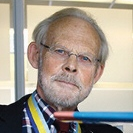Aircraft Design (SI-2/2020)
A special issue of Aerospace (ISSN 2226-4310). This special issue belongs to the section "Aeronautics".
Deadline for manuscript submissions: closed (31 December 2020) | Viewed by 52688
Special Issue Editors
Interests: aircraft design; flight mechanics; aircraft systems; open access publishing
Special Issues, Collections and Topics in MDPI journals
Interests: aircraft design
Special Issues, Collections and Topics in MDPI journals
Special Issue Information
Dear Colleagues,
Aircraft design is, as we know, the first fascinating step in the life of an aircraft, where visions are converted into reality.
In a practical sense, aircraft design supplies the geometrical description of the aircraft. Traditionally, the output is a three-view drawing and a list of aircraft parameters. Today, the output may also be an electronic 3D model. In the case of civil aircraft, a fuselage cross-section and a cabin layout are provided in addition.
In an abstract sense, aircraft design determines the design parameters to ensure that the requirements and constraints are met and design objectives are optimized. The fundamental requirements for civil aviation are payload and range. Many constraints come from certification rules demanding safety. The objectives are often of a financial nature, like lowest operating costs. Aircraft design always strives for the best compromise among conflicting issues.
The design synthesis of an aircraft goes from the conceptual design to the detailed design. Frequently, expert knowledge is needed more than computing power. Typical work involves statistics, the application of inverse methods, and use of optimization algorithms. Proposed designs are analyzed with respect to aerodynamics (drag), structure (mass), performance, stability and control, and aeroelasticity, to name just a few. A modern aircraft is a complex, computer-controlled combination of its structure, engines, and systems. Passengers demand high comfort at low fares, society demands environmentally friendly aircraft, and investors demand a profitable asset.
Overall aircraft design (OAD) comprises all aircraft types in civil and military use, considers all major aircraft components (wing, fuselage, tail, undercarriage) as well as the integration of engines and systems. The aircraft is seen as part of the air transport system and beyond contributing to multimodal transport. Aircraft design applies the different aerospace sciences and considers the aircraft during its whole life cycle. Authors from all economic sectors (private, public, civic, and general public) can submit to this Special Issue (SI). Education and training in aircraft design is considered as important as research in the field.
The SI can be a home for those active in the European Workshop on Aircraft Design Education (EWADE) or the Symposium on Collaboration in Aircraft Design (SCAD), both independent activities under the CEAS Technical Committee Aircraft Design (TCAD). Please see http://AircraftDesign.org for details.
Following the successful initial Special Issue on “Aircraft Design (SI-1/2017)”, this is already the second SI “Aircraft Design (SI-2/2020)”. Depending on the need, further special issues may follow. Activities in the past showed that aircraft design may be a field too small to justify its own (subscription-based) journal. A continuous open access special issue may fill the gap. As such, the Special Issue “Aircraft Design” can be a home for all those working in the field who regret the absence of an aircraft design journal.
The Special Issue "Aircraft Design" is open to the full range of article types. It is a place to discuss the "hot topics" (zero-emission airplanes, electric flight, urban air mobility—you name it). The classic topics in aircraft design remain:
- Innovative aircraft concepts
- Methodologies and tools for aircraft design and optimization
- Reference aircraft designs and case studies with data sets
It is up to us as authors to shape the Special Issue “Aircraft Design” according to our interests through the manuscripts we submit.
Prof. Dr. Dieter Scholz
Prof. em. Egbert Torenbeek
Guest Editors
Manuscript Submission Information
Manuscripts should be submitted online at www.mdpi.com by registering and logging in to this website. Once you are registered, click here to go to the submission form. Manuscripts can be submitted until the deadline. All submissions that pass pre-check are peer-reviewed. Accepted papers will be published continuously in the journal (as soon as accepted) and will be listed together on the special issue website. Research articles, review articles as well as short communications are invited. For planned papers, a title and short abstract (about 250 words) can be sent to the Editorial Office for assessment.
Submitted manuscripts should not have been published previously, nor be under consideration for publication elsewhere (except conference proceedings papers). All manuscripts are thoroughly refereed through a single-blind peer-review process. A guide for authors and other relevant information for submission of manuscripts is available on the Instructions for Authors page. Aerospace is an international peer-reviewed open access monthly journal published by MDPI.
Please visit the Instructions for Authors page before submitting a manuscript. The Article Processing Charge (APC) for publication in this open access journal is 2400 CHF (Swiss Francs). Submitted papers should be well formatted and use good English. Authors may use MDPI's English editing service prior to publication or during author revisions.
Benefits of Publishing in a Special Issue
- Ease of navigation: Grouping papers by topic helps scholars navigate broad scope journals more efficiently.
- Greater discoverability: Special Issues support the reach and impact of scientific research. Articles in Special Issues are more discoverable and cited more frequently.
- Expansion of research network: Special Issues facilitate connections among authors, fostering scientific collaborations.
- External promotion: Articles in Special Issues are often promoted through the journal's social media, increasing their visibility.
- Reprint: MDPI Books provides the opportunity to republish successful Special Issues in book format, both online and in print.
Further information on MDPI's Special Issue policies can be found here.
Related Special Issues
- Aircraft Design (SI-5/2023) in Aerospace (5 articles)
- Aircraft Design (SI-1/2017) in Aerospace (5 articles)
- Aircraft Design (SI-3/2021) in Aerospace (6 articles)
- Aircraft Design (SI-4/2022) in Aerospace (9 articles)
- Aircraft Design (SI-6/2024) in Aerospace (2 articles)
- Aircraft Design (SI-7/2025) in Aerospace (3 articles)






